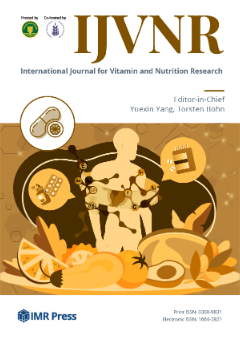International Journal for Vitamin and Nutrition Research (IJVNR) is published by IMR Press from Volume 95 Issue 1 (2025). Previous articles were published by another publisher under a hybrid publishing model, and they are hosted by IMR Press on imrpress.com as a courtesy and upon agreement with Hogrefe.
Vitamin D deficiency and mortality among critically ill surgical patients in an urban Korean hospital
Critically ill patients in intensive care units (ICUs) are exposed to various risk factors for vitamin D deficiency. Vitamin D deficiency in extended-stay patients may result in decreased muscle mass and increased fat tissue, which may impair rehabilitation and recovery. Our study aimed to evaluate the degree of serum vitamin D deficiency in critically ill surgical patients and its association with clinical outcomes. Clinical data from 186 adult male (n = 121; 65.1%) and female (n = 65; 34.9%) patients hospitalized in surgical ICUs at Ajou University Hospital from April 2015 to September 2016 were retrospectively analyzed. All adult surgical patients between the age of 18 and 88 years were enrolled. The mean serum 25-hydroxyvitamin D (25[OH]D) level of all patients was 17.8 ng/mL. A total of 120 patients (64.5%) with serum 25(OH)D levels < 20 ng/mL were classified as the deficiency group. A prolonged hospital stay was observed among the deficiency group but was not statistically significant (p = 0.824). Serum 25(OH)D levels were significantly correlated with age but inversely correlated with Sequential Organ Failure Assessment (SOFA) score, selenium, triglycerides, and C-reactive protein levels. There was no significant difference in mortality rates between the group with a vitamin D injection and the group without a vitamin D injection (14.6% vs. 16.9%, p = 0.074). Vitamin D deficiency was common in surgical ICU patients; however, vitamin D levels were higher in older patients. In conclusion, vitamin D deficiency was inversely associated with the SOFA severity score (correlation coefficient –0.165, p = 0.024) but was not associated with the length of hospital or ICU stay and mortality.

